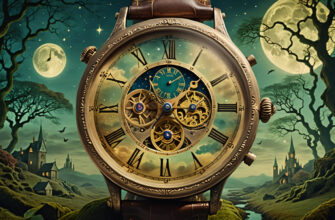Dreaming of a flying chair is like stepping into an unusual, electric scene straight out of a story that mixes ordinary with the surreal. Unlike common symbols, the chair is rooted in daily life, associated with where you sit, your role, or place in the world. Then toss in flight—something wild, uncontained, and full of possibility—and suddenly, this familiar object becomes something charged with layers of meaning. Why is it flying? Who’s in control? And what feelings bubble up when the chair lifts off the ground? These questions mark the edge of where grounded reality meets restless yearning in the dreamer’s mind.
Understanding The Dream Image Of A Flying Chair
The flying chair is a rare motif in dream symbolism because it packages two contrasting vibes into one image: the stability and authority of a chair paired with the boundless freedom and unpredictability of flight. This combo doesn’t show up every day in dreams, which calls us to sit with a unique tension.
On one side, the chair represents a grounded place of power. You can think of it like a throne or a seat at the table—one that signals your role, your status, or your claim in a community or space. It invites a sense of rootedness, an anchor. But then the flight breaks this foundation. The chair is lifted, no longer sitting solidly on the earth, and suddenly authority has wings. This raises questions about how it feels to balance rightful power with the thrill or fear of freedom rising untethered from the solid ground.
The immediate emotions sparked by such a dream can swirl between feeling powerful and feeling exposed, and maybe even a bit unstable. Does the flying chair provoke exhilaration — soaring above limitations — or does it nudge anxiety, like sitting somewhere you don’t quite belong yet? The emotional tension here flows between control and chaos, safety and vulnerability.
Dreaming of a flying chair invites some big questions:
- Who is steering this flight? Are you in control, or is the chair carrying you?
- Is the flight a metaphor for rising up, gaining elevation in some part of life?
- Or could it be a way to escape responsibilities or feelings stuck in a role that weighs you down?
Each person’s relationship to these questions will color the meaning of the dream in personal and profound ways.
Spiritual Interpretations Of Flying Chairs In Dreams
Spiritually, chairs often stand for roles that are fixed, positions of authority that anchor a person’s place in society or community. Seats can symbolize the stability of identity, or the expectations wrapped around a person as they occupy a particular station in life.
Flight in spiritual dreaming usually signals transcendence — the soul’s movement beyond material confines, freedom from old patterns, or a journey toward awakening. A flying chair brings these two together, showing the tension between being firmly placed in a role and being lifted beyond it into unknown skies.
This tension can be felt as a message from the subconscious that you’re caught between wanting to stay grounded in your established self and a powerful yearning to let go, to float free, or even become untethered from traditional roles or expectations.
Sometimes, the flying chair points to a spiritual awakening — a moment where normal perceptions shift and the soul invites itself into new territory. Other times, it may reflect a state of disassociation, a protective float away from overwhelming realities or pain. Either way, this dream image can be a delicate dance between liberation and loss of footing, calling for deep reflection on what inner freedom really means.
Cultural And Historical Perspectives
Looking at chairs through cultural and historical lenses reveals their longtime role as markers of status. The chair isn’t just furniture—it’s a symbol of who gets a seat, who holds power, and who is excluded. Thrones, special seats in councils, or even the everyday chair carry signals about hierarchy and belonging everywhere.
Flying or enchanted chairs appear in mythology and folklore too. Stories often use these magical seats as vehicles that carry heroes to other realms, embodying transformation and escape. This adds another layer of meaning when such chairs show up in dreams, connecting personal experiences to collective imaginations that span across cultures.
Intersectional reflections invite a closer look at who usually gets to “take a seat.” There’s often an unspoken rule about who is given stability and power, and who is left to float or fall without that anchor. Cultural background deeply shapes how a dreamer might experience the flying chair — a symbol of achievement to some, a sign of precariousness or exclusion to others.
| Aspect | Common Symbolism | Dream Meaning For Flying Chair |
|---|---|---|
| Chair | Authority, stability, societal role | Claiming power, rootedness in identity |
| Flight | Freedom, transcendence, escape | Desire for elevation, spiritual growth, or avoidance |
| Flying Chair | Combination of grounded authority + unstable freedom | Balancing control with risk, power with vulnerability |
Psychological Dimensions of Dreaming a Flying Chair
Ever wake up from a dream where a chair isn’t just furniture but somehow takes flight, tossing gravity out the window? That surreal image of a flying chair leans heavily into feelings around power and stability, or the lack thereof. It’s the kind of dream that flickers between authority and anxiety, comfort and detachment.
When a chair flies in a dream, it can point to power dynamics that feel unstable or precarious. Imagine sitting in a seat of leadership that suddenly rises and dips unpredictably. The familiar sense of control slips away, stirring up fears about losing one’s “place at the table,” or that the status quo you once trusted now feels shaky. That trembling chair might reflect waking life situations where authority feels challenged, or where the ground beneath your feet is anything but steady.
Another layer is the flying chair as a metaphor for dissociation or emotional detachment. Sometimes, the mind offers a way out when overwhelming feelings get too bulky. Floating above your usual experience on a chair that defies gravity could symbolize stepping outside your own reality—a protective bubble to avoid the full force of emotional weight or trauma. It’s as if the chair isn’t just carrying your body but the urge to disconnect, keep parts of yourself at a distance, or hover in a place where things don’t press so hard.
For many, the dream stirs a deep desire for escape—from expectations, from responsibilities piled too high, or from the roles that feel suffocating. You’re anchored in a chair that should ground you, yet it lifts you away. In that lifting, you find both the promise of freedom and the pull of evasion, flying above the stress and the everyday demands you’d rather not face. It can feel like craving a secret route out of the weighty business of grown-up life.
The flying chair also invites reflection on identity, visibility, and control. What does it mean to be seen, or not seen, when you’re lifted far above your usual place? Who watches you when you’re in that seat—do you feel empowered, exposed, or both? Playing out this tension in your dream space can be a way to explore how you navigate your personal power in the world, especially when that power feels contested or fragile. It may call on you to consider where you hold authority and where you might be surrendering it, even as you strive to stay upright on your own terms.
Themes of Transformation and Visibility
Flight in dreams carries a timeless energy—a symbol of transformation and transcendence. When a chair takes to the air, the everyday merges with the extraordinary, signaling a shift in how you see yourself or your place in life. It’s like stepping through a threshold into new possibilities, suggesting an urge to rise above old limitations and reclaim a fuller version of you.
Being elevated on a flying chair also tunes into the mix of visibility and vulnerability. When you’re hoisted beyond the familiar ground, you’re not just seen differently—you might feel raw and exposed. Imagine sitting up high, imagined or real eyes trained on you, and the flutter of uncertainty beneath calm. This dream moment asks: what does it cost to be visible beyond where you’re comfortable? It’s a spotlight on how exposure can come with power but also with risk—judgment, isolation, or discomfort.
The symbolism gains sharper edges when filtered through marginalized identities. Anyone who’s been denied a rightful “seat” or questioned in their authority may find these dreams carry the weight of claiming power or resisting erasure. The flying chair can serve as an anthem for taking up space—boldly, bravely—while also questioning what that space means in a world that often refuses full recognition. Will the flight be steady, or marked by jolts and turbulence?
This elevation doesn’t come without costs. The dream whispers of isolation that can come from standing apart, or the instability of balancing in a place not built for you. The chair’s flight is thrilling but precarious, reflecting how growth and transformation often arrive wrapped in disconnection or loneliness. The journey can feel like living between worlds—between grounded reality and soaring possibility—where control is both vital and elusive.
Dreamwork Practices and Reflective Questions
Approaching the flying chair in dreams calls for curiosity and tenderness toward yourself. Instead of rushing to “decode” or push away the feelings it stirs, lean into the questions it raises. What parts of your waking life feel like they’re lifting off the rails? Where do you long to be free, and where do you fear losing a grip?
Journaling can help bring this image into focus. Try prompts that explore your personal relationship with control, freedom, and anxiety within the dream:
- How did it feel to sit in the flying chair—were you in control or passive? Did you trust the ride or dread a fall?
- What responsibilities or expectations are you flying away from, and what might you be avoiding?
- Who, if anyone, was watching your flight? How does that audience shape your sense of visibility and power?
- What does the flying chair ask you to hold on to, and what does it invite you to release?
To take insights from the dream into waking life, consider practices that blend reflection with gentle action:
- Use mindfulness to notice moments when control slips or feels shaky—how do you respond?
- Create small rituals to ground yourself if feelings of detachment are strong, such as connecting with your breath or physical surroundings.
- Explore boundaries around visibility and vulnerability—where can you claim your space with more confidence?
- Invite support from trusted friends or community if the dream raises fears of isolation or instability.
Ultimately, self-knowledge born from the flying chair dream is a form of healing and liberation. It asks you to hold your contradictions—to soar and to steady, to be seen and to protect yourself—and to meet yourself where you are, without judgment. Dreamwork becomes a quiet rebellion against disconnection, inviting a fuller embrace of your power and presence. You were born for this kind of dreaming, this kind of knowing, this kind of rising.








